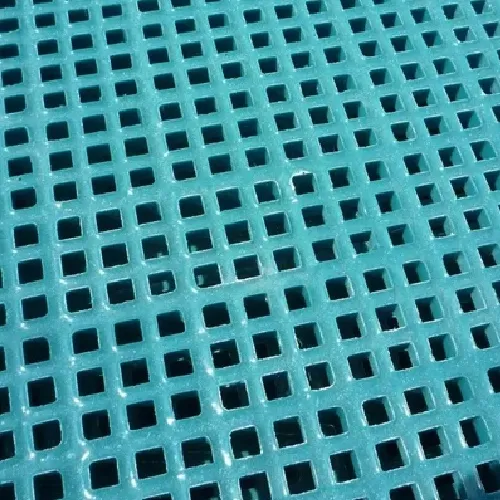loading...
- No. 9, Xingyuan South Street, Dongwaihuan Road, Zaoqiang County, Hengshui, Hebei, China
- admin@zjcomposites.com
- +86 15097380338
- Welcome to visit our website!
The Role of FRP Bars in Enhancing Concrete Strength and Durability
The Role of FRP Bars in Concrete Structures
Fiber Reinforced Polymer (FRP) bars have emerged as a groundbreaking solution in the construction industry, particularly for reinforcing concrete structures. Traditional steel reinforcement has been the norm for many years; however, the unique properties of FRP bars present several advantages that address various challenges posed by conventional materials.
What are FRP Bars?
FRP bars are composite materials made of polymers reinforced with fibers such as glass, carbon, or aramid. These materials are designed to provide tensile strength and structural integrity to concrete, similar to traditional steel reinforcing bars (rebar). The primary differentiating factor lies in their composition, which allows FRP bars to offer several benefits that steel reinforcement cannot.
Advantages of FRP Bars
1. Corrosion Resistance One of the most significant advantages of FRP bars is their resistance to corrosion. In environments exposed to moisture and chemicals—such as in marine structures, bridges, and parking garages—steel reinforcement can deteriorate over time, leading to structural failure. FRP bars do not corrode, thereby increasing the longevity and durability of concrete structures.
2. Lightweight FRP bars are considerably lighter than steel, making them easier to handle, transport, and install. This weight advantage not only reduces labor costs but also minimizes the overall weight of the structure, potentially leading to savings in foundational support requirements.
3. High Strength-to-Weight Ratio Despite their lightness, FRP bars exhibit a high strength-to-weight ratio. This means that they can provide substantial reinforcement without adding significant weight to the concrete, which is particularly beneficial in applications where weight restrictions are critical.
4. Non-Magnetic Properties In environments where electromagnetic interference is a concern, such as in certain laboratory or medical facilities, the non-magnetic nature of FRP bars provides a significant advantage. They do not interfere with sensitive equipment, maintaining the integrity of operations.
5. Design Flexibility The manufacturing process of FRP allows for customized shapes and sizes tailored to specific structural requirements. This flexibility can enhance design possibilities, facilitating innovative engineering solutions that traditional materials may not support.
frp bars in concrete

Applications of FRP Bars
FRP bars are increasingly being used in various applications
- Bridges In bridge construction, the lightweight and corrosion-resistant properties of FRP bars extend the lifespan and reduce the maintenance needs of the structure, providing significant long-term cost savings.
- Marine Structures Coastal and offshore applications benefit immensely from FRP bars due to their ability to withstand harsh environmental conditions without degradation.
- Repair Works FRP bars are also applied in retrofitting and repair of existing structures, providing additional support without the need for extensive reinforcement or additional weight.
- High-Rise Buildings As urbanization increases, so does the need for high-rise structures. FRP bars can contribute to the structural integrity of these buildings while minimizing the risk of corrosion in aggressive environments.
Challenges and Considerations
While the advantages of FRP bars are compelling, there are challenges to consider. The initial cost of FRP materials is generally higher than that of steel, which can deter some projects. Additionally, the bonding between FRP bars and concrete needs careful consideration, as improper installation may lead to reduced effectiveness.
Conclusion
The integration of FRP bars into concrete structures represents a significant advancement in construction technology. Their unique properties—such as corrosion resistance, lightweight design, and durability—position them as a superior alternative to traditional materials in specific applications. As the industry continues to innovate, the use of FRP bars will likely expand, paving the way for more resilient and long-lasting structures that can better withstand the challenges posed by time and the environment.
-
GRP Structures: The Future of Lightweight, High-Performance EngineeringNewsJun.20,2025
-
FRP Water Tank: High-Performance Storage for Corrosive and Clean Water SystemsNewsJun.20,2025
-
FRP Square Tube: The New Industry Standard for Chemical and Structural ApplicationsNewsJun.20,2025
-
FRP Pultruded Profiles: The Ultimate Choice for Lightweight Structural StrengthNewsJun.20,2025
-
FRP Handrails: The Safer, Smarter, and Stronger Choice for Modern InfrastructureNewsJun.20,2025
-
FRP Grating: The Smart Solution for Durable, Lightweight Industrial FlooringNewsJun.20,2025
-
Why Choose a Galvanized Water Tank for Your Storage NeedsNewsMay.21,2025
